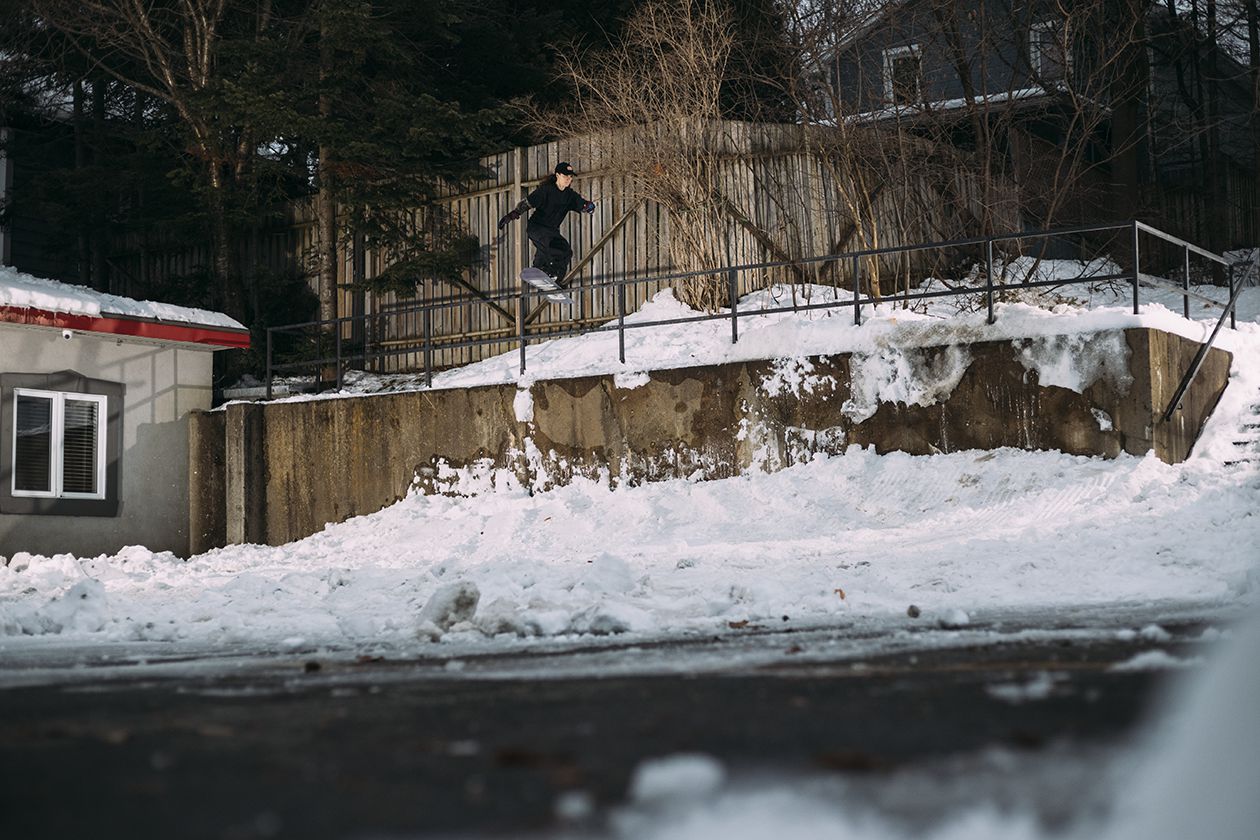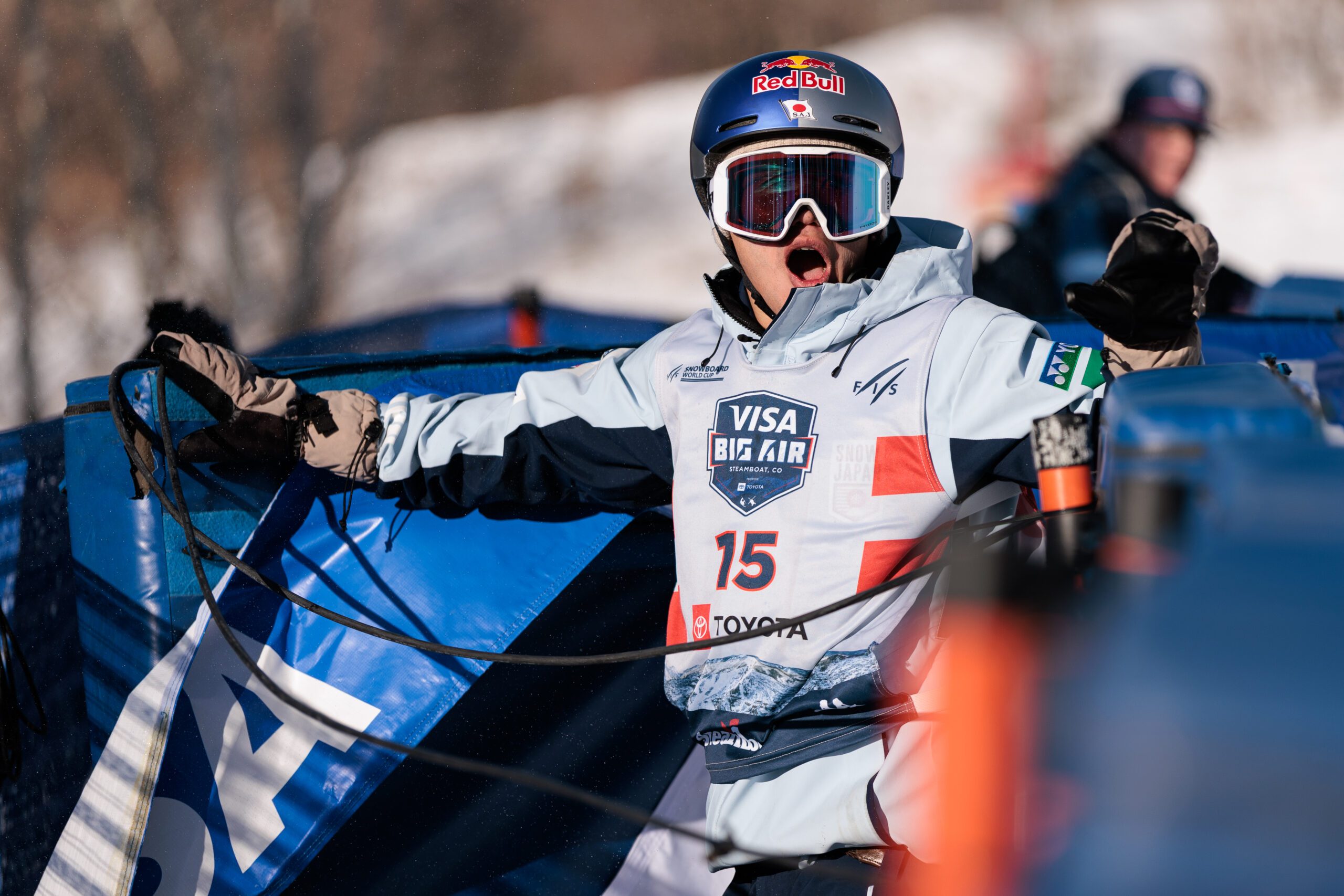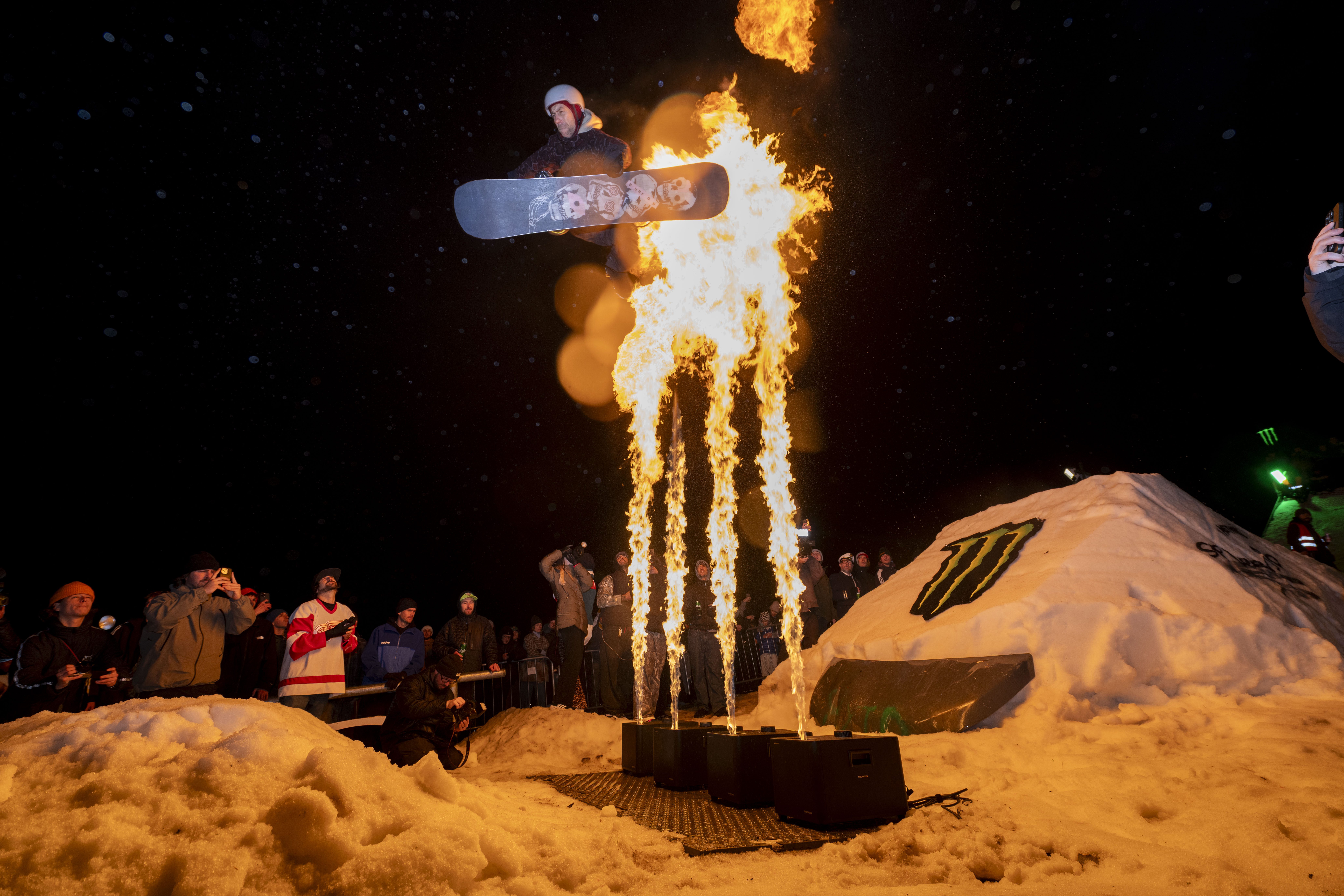0
£0.00

Maggie Leon lets us in on how she’s successfully managed to create a role that merges her passion for snowboarding and engineering.
Interview Stella Pentti
Imagine being six years old and having an idea of what your dream job would look like, and then one day, after a lot of hard work and determination, being offered a role you worked on creating yourself.
After her first day of science class in 1st grade, Maggie Leon knew she wanted to become an engineer. But her passion for snowboarding grew strong within her, too. How would she be able to create a future that wouldn’t sacrifice her love for either?
Driven, talented and strong-willed, Maggie’s journey is an inspiration for us all. After years of grafting, she is currently employed at Rome Snowboards in a role she helped shape herself, working as both a product engineer and a professional snowboarder.

Hi Maggie! Thanks again for taking the time to sit down with us. You moved to The Netherlands not too long ago, how’s that been?
It’s been great! It’s crazy being able to drive only a couple of hours and be in another country. And it’s unreal how many different places we’ve been able to visit in only six months of living here. We lucked out with the area we’re living in and took a gamble on a Facebook marketplace apartment, but it couldn’t have worked out better. Pretty much everyone here knows English, so we’re pretty privileged in that sense.
Where were you based before you moved to Europe?
I was based in Burlington, VT, for the past eight years, where I attended UVM, University of Vermont. I interned at Burton Snowboards the summer going into my senior year of engineering school and met Doyle, my life and career mentor. Doyle was the Rapid Prototype engineer (mad scientist!) who managed the Craig Kelly RP facility. After completing the internship, I continued to work with Doyle and Burton as a client while leading a team of five engineering students for my Senior Capstone project at UVM. With Doyle’s help, I joined Burton’s engineering team right out of school. After I graduated, he bought me a flight out to the Mt Hood Demo Center to work with Burton’s testing coordinator. I worked alongside him in the lab for a couple of years and then moved into a design, development, and commercialisation-based role as a Design Engineer on the product development team. I left Burton about a year and a half ago and started at Rome Snowboards in Waterbury, VT, in the summer of 2023, and then we moved here in January 2024.
Sounds like quite the journey. What was your job like at Burton?
While working in the RP facility under Doyle, we managed, ran, and maintained all of the 3D printers (Selective Laser Sinter, FDM, and Polyjet) and post-processed all 3D printed parts.
We also had quite a few side hustle projects. One major focus of ours was working with adaptive athletes to create gear that eliminates the compromises that these riders have to make for able-bodied equipment. This is something that Doyle has done since the start of his career at Burton 25+ years ago. We worked with riders who had muscle deformities, upper mobility impairments, and above and below-the-knee amputations. The projects ranged really heavily – from fitting prosthetics and pylons to boots to working with the in-house softgoods team to develop access-friendly pants and jackets.
After moving out of the lab, I started working with the hard goods engineering team, mainly focused on boots and bindings. We worked off project briefs to develop specifications such as 3D models and 2D drawings to facilitate product manufacturing. The process consists of ideating and creating, working alongside the industrial design team to refine the design and make it more visually appealing, putting the part through a series of tests in Burton’s in-house test lab, and then validating on snow.
What made you take the leap from Burton to Rome?
In the end, there just wasn’t enough time to pursue the snowboarding side of my career in the way that I needed to in order to reach my goals. There’s a shelf life to a snowboard career but no shelf life to working as an engineer. I decided that at that point in my life, I needed to prioritize my snowboarding.
I reached out to Jess Kimura, who knows the industry so incredibly well. She was able to give me some guidance on how to move forward. I started trying to curate a role as a designer and snowboarder and figured out a strategic way to pitch it to other industry brands.
Then, one day, I was in Waterbury visiting my friend Ashley Rosemeyer, and I happened to run into Dennis Dusseldorp, the CEO of Low Pressure Studio, at a local brewery. He had an engineer on his team reach out to me on LinkedIn a few months prior, but I didn’t entertain the idea because I didn’t want to jeopardize my career at Burton at the time. After running into Dennis at the brewery, he suggested getting breakfast the next morning and asked, ”What can we do to get you to join LPS? What would your ideal role consist of?”
Luckily enough, I had already created a pitch deck that outlined exactly what I was looking for. I had it on my phone and sent it over to him right then and there. He came back with a phone call a couple of days later and then emailed over a full offer letter. I called him right away, accepted, and then scheduled a meeting to roll through the Waterbury office and meet the team. And that was that!

Sounds like a pretty cool job you’ve created for yourself. Was the plan always to relocate to Europe?
Actually, no, it was not! After speaking with Dennis, I realized how cool it could be to spend some time living in a different area since I’d been in VT for a while. I didn’t think I could pass up the opportunity to live in Europe.
It’s also nice to see more females working on the engineering side of snowboard products.
Absolutely! I’ve recently seen an influx of women working in the industry as a whole. I was really excited to join the Rome development team, knowing that I’d be working with my friend Portia, our graphic designer. It’s great that she ensures we stay away from the shrink-it-and-pink-it approach that we often see in the industry. She works on both men’s and women’s boards, so there’s true cohesion between the two lines.
Was studying engineering something you always wanted to do?
Oh definitely. I’ve known that I wanted to be an engineer since the first day of science class in 1st grade. I remember walking out of the class and being so fired up that I decided to start my own little engineering design journal. My dad was a chemical engineer who encouraged and inspired me to explore the designs I sketched up. I held onto that journal for years. Every holiday, he would give me these exercise/experiment kits to help me understand the science behind some of my ideas. It would range from soldering kits to capturing energy in tiny solar panels. My mom signed me up for rocket camp, and I’d have birthday parties at the local science centre. Really nerdy, I know, haha, but my parents were both always really supportive.
Were you set on working as an engineer in a snowboard company?
That was the dream! When I was around ten or so, my brother, Joey, and I started to look to try to find a sponsor, classic little kid shit. We would send packages out to brands and try to make connections. My dad would help us prepare these packages and letters that we’d send over. Around that time, my dad planted the idea of working and riding for a brand. I held onto that idea for ten more years and eventually tried to bring it to fruition. Since Burton is based in VT and has a relatively large design team, he suggested attending UVM. We toured it the summer going into my senior year of high school. Unfortunately, my dad passed away in the fall of my senior year due to brain cancer. I picked UVM and attended college there so that I could be close to my brother and mom, who were moving to Killington the following year.
When I was at UVM, I was trying to figure out what I wanted to do after graduation. Snowboarding was not something I wanted to let go of, but engineering was something I wanted to pursue. I didn’t want to drop either, but I didn’t know how to make it work. And then I met Doyle, the excited and passionate mad scientist from Burton…
How do you think you’ll be able to manage your new engineer/rider position at Rome?
I’ve been trying to be as effective and efficient while fulfilling each part of the role. One of the coolest things about this position is the flexibility. I will be continually involved with the brand throughout the year, filming and riding in contests while also working as a liaison between our team riders and the development crew. I’ll be on snow organically, receiving feedback from the riders and noting observations made about our products, as well as observing our competitors’ products (market research!). I will also take on less time-sensitive work and more general manufacturing-related tasks in the winter months. Then, after the season is over, I’ll hop back into the R&D and engineering side of things.
So, a big part of your role is observing how people ride in the Rome products?
Definitely. My brother Joey is a really aggressive rider who is on our AM team – maximized fatigue testing. I often ride alongside our team riders at events and while filming. I’m constantly making micro adjustments to my gear and getting as much first hand experience on our products as well. There’s always something to bring back to the table.

What are some of the highlights and challenges you’ve encountered throughout your career?
Hmm, I don’t know where to begin… Throughout my career, snowboarding has allowed me to travel all over the world. I’ve been able to meet so many people and visit so many new places that I probably wouldn’t have gotten the chance to see without it, like the opportunity to live in Europe.
Working in a male-dominated field within a male-dominated industry can sometimes be challenging. I’m sure many women can relate to the feeling of needing to prove yourself by going above and beyond to be taken seriously when you’re in a room of all men. I experience that pretty often. It helps, though, when you find people that really back what you’re doing. I’m so incredibly grateful to have the opportunity to be in this unique role. There have been some logistical challenges, but it’s pretty comforting to know that I can hop back into the design world once the season ends (or, inevitably, when injuries happen). I really do feel lucky.
Thinking back about your journey, what advice would you give others to pursue their dreams?
This one is super cheesy, but what I’ve been telling myself for a while is to be comfortable being uncomfortable. When I’m slightly uncomfortable, it’s usually when I’m striving for what I’m on the verge of getting. If I’m slightly uncomfortable, that’s when I’m really going to push through and surprise myself. Same with snowboarding. If you’re too comfortable, you won’t learn new tricks. If you’re out of your comfort zone, you’re going to try bigger, scarier shit. That’s it.

With the Olympic qualification window fully open, this winter is less about

Two Days of Smoke, Sparks & Straight-Up Snowboard Mayhem Krakow didn’t just
Sign up for the very best in snowboard culture, get notified of prize drops, and receive our weekly essential news hit: The Friday Dump.
| Cookie | Duration | Description |
|---|---|---|
| cookielawinfo-checkbox-advertisement | 1 year | The cookie is set by GDPR cookie consent to record the user consent for the cookies in the category "Advertisement". |
| cookielawinfo-checkbox-analytics | 11 months | This cookie is set by GDPR Cookie Consent plugin. The cookie is used to store the user consent for the cookies in the category "Analytics". |
| cookielawinfo-checkbox-functional | 11 months | The cookie is set by GDPR cookie consent to record the user consent for the cookies in the category "Functional". |
| cookielawinfo-checkbox-necessary | 11 months | This cookie is set by GDPR Cookie Consent plugin. The cookies is used to store the user consent for the cookies in the category "Necessary". |
| cookielawinfo-checkbox-others | 11 months | This cookie is set by GDPR Cookie Consent plugin. The cookie is used to store the user consent for the cookies in the category "Other. |
| cookielawinfo-checkbox-performance | 11 months | This cookie is set by GDPR Cookie Consent plugin. The cookie is used to store the user consent for the cookies in the category "Performance". |
| viewed_cookie_policy | 11 months | The cookie is set by the GDPR Cookie Consent plugin and is used to store whether or not user has consented to the use of cookies. It does not store any personal data. |
| Cookie | Duration | Description |
|---|---|---|
| _ga | 2 years | This cookie is installed by Google Analytics. The cookie is used to calculate visitor, session, campaign data and keep track of site usage for the site's analytics report. The cookies store information anonymously and assign a randomly generated number to identify unique visitors. |
| _gat_gtag_UA_189035576_1 | 1 minute | This cookie is set by Google and is used to distinguish users. |
| _gid | 1 day | This cookie is installed by Google Analytics. The cookie is used to store information of how visitors use a website and helps in creating an analytics report of how the website is doing. The data collected including the number visitors, the source where they have come from, and the pages visted in an anonymous form. |
| CONSENT | 16 years 4 months 12 hours | These cookies are set via embedded youtube-videos. They register anonymous statistical data on for example how many times the video is displayed and what settings are used for playback.No sensitive data is collected unless you log in to your google account, in that case your choices are linked with your account, for example if you click “like” on a video. |
| Cookie | Duration | Description |
|---|---|---|
| IDE | 1 year 24 days | Used by Google DoubleClick and stores information about how the user uses the website and any other advertisement before visiting the website. This is used to present users with ads that are relevant to them according to the user profile. |
| test_cookie | 15 minutes | This cookie is set by doubleclick.net. The purpose of the cookie is to determine if the user's browser supports cookies. |
| VISITOR_INFO1_LIVE | 5 months 27 days | This cookie is set by Youtube. Used to track the information of the embedded YouTube videos on a website. |
| YSC | session | This cookies is set by Youtube and is used to track the views of embedded videos. |
| yt-remote-connected-devices | never | These cookies are set via embedded youtube-videos. |
| yt-remote-device-id | never | These cookies are set via embedded youtube-videos. |
| Cookie | Duration | Description |
|---|---|---|
| _pk_id.43969.7c7f | 1 year 27 days | No description |
| _pk_ses.43969.7c7f | 30 minutes | No description |